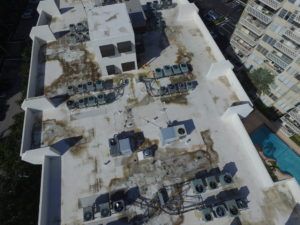

California-based BetterView, a platform & service provider for capturing and analyzing data from drones, announced it has already performed more than 6,000 roof top inspections for insurers since its inception 2 years ago.
What was once a manual, error prone and dangerous inspection process has been streamlined by creating a software platform and a network of 4,400+ drone operators to capture raw image data and analyze it.
“We created BetterView to solve a problem that has plagued the insurance industry for decades,” explained David Tobias, co-founder & COO. “Having grown up working in my family’s inspection business and later running it, there has always been a need for quality roof data. I remember going to job sites and seeing inspectors tying cameras to painters’ poles in order to document the condition of roofs. As digital technologies have transformed underwriting and claims operations over the last few years, insurers were still relegated to getting property and roof data through archaic inspection processes that involved drive-by inspections, climbing ladders and manually inspecting roofs, or renting expensive machinery like cherry pickers to assess churches and multi-level structures,” said Tobias.

BetterView’s drone inspections capture an average of 350 roof and property images in approximately 20 minutes or less, as well as provide additional insights through advanced visualizations like 3D models and digital elevation maps. Moisture trapped in roofs can now be spotted using thermal imagery, flood risk determined from property elevation, wildfire defensible space measured on 3D models, and building and property measurements derived from orthomosaic maps all captured using a small lightweight drone.
In addition, detailed reports for roof inspections, claims estimates, wildfire reports and site inspections are provided to uncover hidden exposures related to parking lots, missing railings, fire pits, sidewalks, trampolines and more. Some of the potential benefits of this type of imagery and data include:
“While drone technology has been around for a long time, it was mainly used by the military and more recently hobbyists,” said David Lyman, co-founder & CEO. “The insurance industry took a wait and see approach when adopting drone technology for various reasons, including: headline risk if something bad happened, the cost of acquiring a manned pilot’s license prior to FAA Part 107, waiting for improvements in drone hardware, and more importantly, gaining experience with drones by conducting tests.
After FAA Part 107 went into effect on August 29, 2016 and consumer grade hardware developed enough to be adopted for commercial purposes, Lyman said they could see drones move from concept to real production use.
“We realized early on though that while drones provided a plethora of useful data, insurers don’t want to sift through hundreds or thousands of photos. They just want a high level overview of property and building data with 10 to 20 photos per building and a PDF report for compliance purposes,” said Lyman. “Based on this initial feedback we hired building experts to analyze photos, tag them for any issues and put them into condensed reports. Now we’re taking things one-step further by having our experts train our deep learning and computer vision systems to expand our list of the most common issue types (87 and counting) and tag them, allowing our artificial intelligence systems to immediately flag common issue types that humans could miss.”
According to Lyman, insurers are allocating budget dollars in 2017 to move from concept to real production use.
“In 2018 we expect to see a significant ramp up in the use of drones by insurers and reinsurers,” said Lyman.
For more information about BetterView, contact sales@better.vu